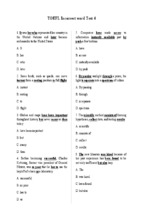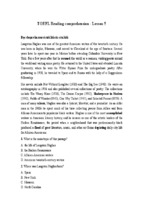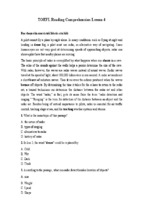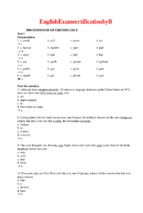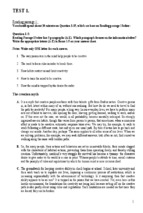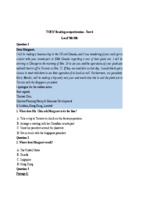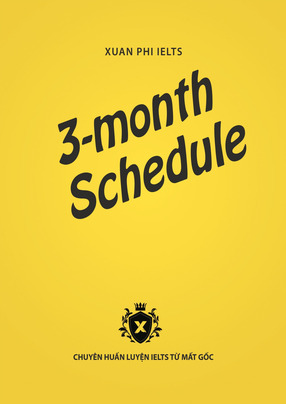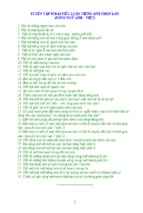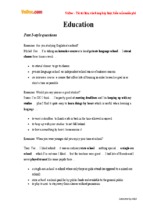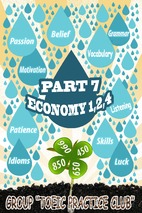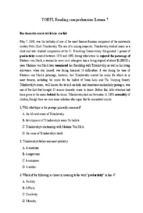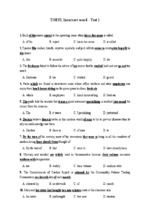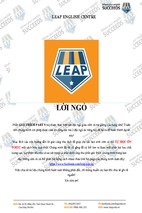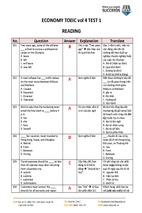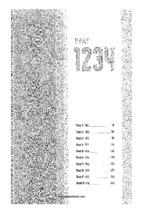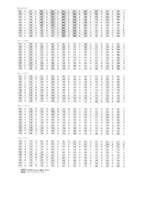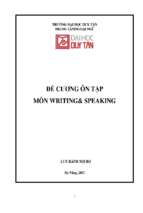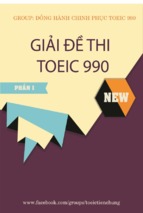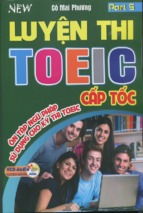to success
to success
.
.
ERIC VAN BEMMEL • JANINA TUCKER
WILEY
John Wiley&.. Sons Australia, Ltd
Third edition published in 2011 by
John Wiley & Sons Australia, Ltd
42 McDougall Street, Milton, Qld 4064
Typeset in 10. 75/13 Caslon 224 LT Book
First edition published 1997
Second edition published 2002
© John Wiley & Sons Australia, Ltd 1997, 2002, 2011
The moral rights of the authors have been asserted.
National Library of Australia Cataloguing-in-Publication entry
Title:
Edition:
ISBN:
Subjects:
Other Authors/
Contributors:
Dewey Number:
IELTS to success: preparation tips and practice tests/
Hawthorn Leaming.
3rd ed.
9781742467047 (pbk.)
English language - Examinations, questions, etc.
International English Language Testing System.
English language - Textbooks for foreign speakers.
English language - Australia - Study and teaching
- Foreign speakers.
English language - Problems, exercises, etc.
Hawthorn English Language Centres.
428.0076
Reproduction and Communication for educational purposes
The Australian Copyright Act 1968 (the Act) allows a maximum
of one chapter or 10% of the pages of this work, whichever is the
greater, to be reproduced and/or communicated by any educational
institution for its educational purposes provided that the educational
institution (or the body that administers it) has given a remuneration
notice to Copyright Agency Limited (CAL).
Reproduction and Communication for other purposes
Except as permitted under the Act (for example, a fair dealing
for the purposes of study, research, criticism or review), no part
of this book (with the exception of the Answer sheet on page 65)
may be reproduced, stored in a retrieval system, communicated
or transmitted in any form or by any means without prior written
permission. All inquiries should be made to the publisher.
The authors take no responsibility for the factual accuracy or
the views expressed in the listening scripts and reading passages
in this book.
Art by Paul Lennon
Co'Ver and internal images: © Used under licence from Shutterstock
Typeset in India by Aptara
Printed in China by
Printplus Limited
10 9 8 7 6 5 4 3 2 1
Reprint 2011
What's inside IELTS to Success v
Preface vi
Acknowledgements vii
Introduction to the IELTS test
1
The IELTS Listening Module 2
The IELTS Reading Module 3
The IELTS Writing Module 4
The IELTS Speaking Module 5
IELTS test results 5
Frequently asked questions about IELTS 6
Skills and Strategies for IELTS
7
Skills for the Listening Module 7
Practice for the Listening Module 8
Skills for the Reading Module 16
Practice for the Reading Module 19
Skills for the Writing Module -Task 1 25
Practice for the Writing Module -Task 1 26
Skills for the Writing Module -Task 2 30
Practice for the Writing Module -Task 2 32
Skills for the Speaking Module 34
IELTS study hints 41
Countdown to the test 41
Practice Listening Papers 43
Practice Reading Papers 64
Practice Writing Papers
129
IELTS to Success was developed and trialled at the Hawthorn English Language
Centre - Melbourne and updated at Hawthorn-Melbourne, a member of the �avitas
Englis_h group. Janina Tucker wrote the Skills and Strategies section and provided
revised material on Speaking skills for the second-and third-editions. Eric van_Bemmel
wrote the practice Listening and Reading papers. Both authors developed the writing
papers in this edition.
For their support during the planning and writing of the third edition, the authors
would like to express their gratitude to Denise Bush, Richard Arkell and Kylie Wills.
The authors are _ also indebted to their colleagues Helen Consalvo, James Kerley,
Kathleen Lynch, Geoff Millar, Suzette Misrachi, Don Oliver and Heid(Skape:ntzis for
their generous. contribution of time to the production of the a9companying audio
recordings. For assistance irt the trialling of test writing material, thanks also to Olga
Tsarikova and Rob Skillern.
The a:uthors especially wish to acknowledge Suzette, Reuben, Chris, Kathryn,
Stephen and Sarah for their patience and understanding over the many hours it took
to produce and revise this book.
The authors and publisher are grateful to the following individuals and organisations
for permission to reproduce and adapt copyright material: AB and J\V Cribb, Wild
Food in Australia, William Collins, Sydney, 1975, adapted with the permission: of
Harper-Collins Publishers; Michael Replogle ( contact at www.edLorg), 'Non-Motorized
Vehicles in Asia: Strategies for Management', presented at the Supercities· of the
Pacific Rirh Conference, October 1992, Centre for Renewable Energy and Sustainable
Technology.
_
. _
.
_
Every effort has been made to trace the ownership of copyright material. Information
that will enable the publisher to rectify any error or omission in subsequent editions
will be welcome. In such cases, please contact the Permissions Section of John Wiley
& Sons Australia, Ltd.
vii
IELTS, the International English Language Testing System, is a test designed to assess
the English language ability of people who need to study or work in English-speaking
countries. IELTS is recognised by universities, employers and professional bodies in
many countries including Australia, Canada, New Zealand, the United Kingdom and
the United States.
Test candidates planning further study at an undergraduate or postgraduate level
should take the IELTS Academic Module. Candidates wishing to enrol in secondary
school or vocational training should take the General Training Module. (The General
Training Module is also used for purposes of immigration to Australia, Canada and
New Zealand.) The two types of test differ only in the reading and writing modules;
the listening and speaking modules are the same. Please note that this book does not
provide practice specifically for the General Training Module.
Candidates do not pass or fail IELTS. Educational institutions and organisations
accept different IELTS scores depending upon their own requirements. You will find
more information on the official IELTS website (www.ielts.org).
Test results will be produced 13 days after the test. Candidates receive their results
in the form of 'band scores' (see pages 5-6 for more information on band scores).
Candidates will only receive one copy of their test results, which are valid for two years.
Additional copies can be sent to receiving organisations and institutions by test centres.
Registered organisations can also receive test results electronically.
The IELTS test is divided into four modules. These modules, in the sequence a
candidate sits them, are shown below. T he entire test takes around 2 hours and
45minutes.
Listening Module
Reading Module
Length:
Length:
4 sections:
,..,. 3.reading passages:
..,
approx.
approx.
40 questions
40 questions
Time:
about 30 minutes
Ti,me:
60 minutes
Writing Module
Speaking Module
Length:
Length:
2 tasks: one of at
3 parts:
least 150 words, �
,. conducted by a
trained examiner
one of at least
250 words
Ti,me:
Ti,me:
60 minutes
11-14 minutes
Introduction to the IELTS test
1
The IELTS Listening Module
This module consists of four audio sections of increasing difficulty. The Listening
Module includes a mix of monologues and dialogues. The recording is played once
only.
Sections 1 and 2 normally involve speakers talking about social situations and
needs. For example, there may be a conversation between a university student and a
landlord, or a monologue about a city's public transport system.
Sections 3 and 4 reflect a more 'educational' context. For example, you may hear a
group of students discussing their lecture notes. Or you may hear part of a lecturer's
talk on a given subject. (Remember that the Listening Module is not assessing your
knowledge of any particular subject. There is no need to feel anxious if the topic of the
conversation or monologue is not familiar.)
Your task is to answer questions as you listen to the audio. For each section, you
will hear a (recorded) announcer introducing the situation. You are then given a short
period (up to 30 seconds) to read through the questions for that section. As the con
versation or monologue proceeds, work through the questions. When the section
finishes, you will be given an additional 30 seconds to check your work. Each section
follows this pattern.
In the actual IELTS test, you are permitted to write your answers on the question
paper. At the end of Section 4 of the Listening Module, you will be asked to transfer
your answers from the question paper to an answer sheet. You will be given about ten
minutes to transfer your answers. (Note that no answer sheets for the Practice Lis
tening Modules are contained in this book.)
There are several types of questions you can expect in the Listening Module. These
include:
•
•
•
•
•
short answer
multiple choice
matching
labelling a diagram/plan/map
completing sentences
•
•
•
•
•
classification
completing a summary
completing a table
completing a form/notes
completing a flow chart.
Sample answers are sometimes provided in the IELTS Listening Module.
Although you should expect the types of questions listed above, this does not mean
you will have to answer each type. The IELTS Listening Module contains a combi
nation of some or all of the listed types, but the combination changes from test to test.
In other words, you can never be sure exactly which question types you will have to
answer on any given test date.
The types of skills the Listening Module assesses include:
• identifying the gist of a conversation or monologue
• extracting specific factual information
• identifying speaker roles
• identifying relationships between ideas or pieces of information, such as:
- cause and effect
- order of events
- comparison
• following directions and instructions
• identifying numbers, dates, time etc.
2 IELTS to Success
• making inferences
• determining when a speaker is expressing fact, assumption or opinion.
The Listening Module must be taken together with the Reading and Writing Modules.
• You will.find tips and practice sections for the Listening Module on pages 7-16.
• Practice tests for the Listening Module begin on page 43.
The IELTS Reading Module
This module consists of three reading passages of increasing difficulty, with a total of
2000 to 2750 words. You are given 60 minutes to answer questions for all three pas
sages. Each reading passage is accompanied by questions.
The reading passages are on a variety of subjects and are chosen for their suitability
for candidates entering university. For example, a passage may discuss alternative
energy projects or perhaps report on research into management trends. The passages
may contain information presented in the form of tables, diagrams, charts and so on.
A short glossary of technical words may accompany reading passages.
Questions generally follow the reading passages to which they refer, but occasion
ally questions occur before a reading passage. (Remember that the Reading Module is
not assessing your knowledge of any particular subject. There is no need to feel anx
ious if the topic of the passage is not familiar.)
Your task is to answer the questions based on the reading passages. You must place
your answers directly on the answer sheet, although you are free to make marks, such
as underlining, on the question paper. (Note that a photocopyable answer sheet for the
practice reading papers can be found on page 65.)
There are several types of questions you can expect in the Reading Module. These
include:
• short answer
• multiple choice
• matching
• classification
• completing sentences
• completing notes
• completing a summary
• completing a table
• completing a form
• completing a flow chart or diagram
• selecting headings for paragraphs and sections
• recognising a writer's views or claims.
Sample answers are sometimes provided in the IELTS Reading Module.
Although you should expect the types of questions listed above, that does not mean
you will have to answer each type. The IELTS Reading Module contains a combination
of some of the listed types, but the combination changes from test to test. You can
never be sure which question types you will have to answer on any given test date.
The types of skills the Reading Module assesses include:
• identifying the gist of a passage
• finding detailed factual information in a passage
Introduction to the IELTS test
3
• identifying relationships between ideas or information items, such as:
- cause and effect
- order of events
- comparison
• making inferences
• distinguishing between fact, assumption or opinion
• understanding text organisation
• summarising information.
The Reading Module must be taken together with the Listening and Writing Modules.
• You will.find tips and practice sectionsfor the Reading Module on pages 16--24.
• Practice tests for the Reading Module begin on page 64.
The IELTS Writing Module
This module consists of two activities, Writing Task 1 and Writing Task 2. You are
given 60 minutes to complete both tasks.
In Writing Task 1, you are asked to describe information that is usually presented
in the form of a graph, table or diagram. You may be asked to do one of the following:
• organise, present and compare data
• describe the stages of a process
• describe an object or event
• explain how something works..
You must write a minimum of 150 words for Task l. It is recommended that you spend
about 20 minutes.
In Writing Task 2, you are asked to:
• present and justify an opinion
• evaluate and challenge ideas
• propose a solution to a given problem
• compare and contrast evidence.
You must write a minimum of 250 words for Task 2. It is recommended that you spend
about 40 minutes.
The writing tasks are on a variety of subjects and are chosen for their suitability for
candidates entering university. For example, you may be asked to describe a graph com
paring working hours in different countries (Task 1), or you may be asked if you agree
that technology is destructive to traditional societies and to give your reasons (Task 2).
In the actual IELTS test, you must write your answers in essay or report form on
the Writing Module answer sheet. You are permitted to make marks, such as a plan or
_ outline, on the question paper. (Note that no answer sheets for the practice writing
tests are contained in this book.)
The Writing Module must be taken together with the Listening and Reading Modules.
• You will find tips and strategies for the Writing Module on pages 25-34.
• Practice tests for the Writing Module begin on page 129.
4 IELTS to Success
.
The IELTS Speaking Module
This module consists of a one-to-one interview with an examiner.
The interview lasts between 11 and 14 minutes and is divided into three parts:
Part 1. Introduction and interview
Here you will be introduced to the examiner and your name and identity will be
checked. As a warm-up to the remainder of this part, you will be asked a series of
questions that relate to your own personal life. These will be closely followed by
further questions, also based on familiar topics, that cover a slightly wider range of
experiences.
In Part 1, the examiner can repeat a question only once, as he or she must adhere
to a predetermined script. The examiner is not allowed to explain the question to you.
This part normally takes four to five minutes.
Part 2. Individual long tum
In this part, the examiner will give you a topic and ask you to talk about it for one to
two minutes. You will be told that you have one minute to prepare your ideas and you
will be given some paper and a pencil for making notes about the given topic. You will
also be presented with a Candidate Task Sheet, which tells you what to describe and
what details you should include in your short presentation.
After one minute, the examiner will ask you to begin. At the end of your presen
tation, the examiner may ask you on� or two questions related to your talk in order to
complete this part of the test.
Including preparation time, this part usually takes three to four minutes.
Part 3. 1\vo-way discussion
Here, the examiner will encourage you to discuss a series of more general questions
related by theme to the topic you spoke about in Part 2. The discussion typically
goes into some depth in this part; the examiner will often ask questions that are quite
abstract and that require complex answers.
This part of the test normally takes four to five minutes.
The examiner will then thank you, and that will signal the end of your speaking test.
• Remember that the Speaking Module is not assessing your knowledge of any
particular subject. There is no need to feel anxious that a speaking topic might be
unfamiliar to you.
• Your interview will be recorded by the examiner.
• You will find a more detailed description of the Speaking Module, together
with tips and strategies, on pages 34-41.
IELTS test results
Results are given in the form of band scores. One band score is given for each of the
four IELTS modules. An overall band score is calculated from these four band scores.
These results are presented on the Test Report Form (TRF).
Band scores range from 1 to 9. A band score 1 means the candidate has essentially
no ability to use English. A band score 9 indicates the candidate is a fluent and accu
\ rate user of English, much like an educated native speaker. A band score of O is given
Introduction to the IELTS test
5
only when a candidate does not attempt the test. For entrance to universit-y in coun
tries such.as Australia and the United Kingdom, overall band scores of between 6 and
7 are usually acceptable. Some university faculties require that band scores for each
of the four IELTS modules meet a given minimum level.
An IELTS test result may look something like this:
Test results
Listening
Band
Reading
Band
Writing
Band
Speaking
Band
6.5
6. 0
7.0
6.5
OVERALL BAND
I 6.51
Frequently asked questions about IELTS
• What IELTS band score do I need to get into university?
•
•
•
•
•
You must find out what score you need from the relevant faculty or department of
the university to which you are applying. To find out more information about which
institutions accept IELTS and what test scores are required for entry, go to the
official IELTS website (www.ielts.org).
Can the IELTS test be taken more than once?
Yes, and there is no waiting period to re-sit the test. However, further study is rec
ommended before sitting the test again.
Do I have to do all four IELTS modules on the same day?
No. The Speaking Module can sometimes be done on a separate day. Check with
your nearest IELTS test centre. The Listening, Reading and Writing Modules must
be done together.
Is it necessary to do all four IELTS modules?
Yes. University faculties are often interested in how you do in each of the four
modules. Also, the overall band score cannot be calculated unless all four tests have
been completed.
How long will it take to get my results?
The test results are produced 13 days after your test date. Some centres also provide
SMS alerts and an online results service.
How can I.find out more information about the IELTS test?
Go to the official IELTS website (www.ielts.org) for IELTS test information.
6 IELTS to Success
The following section of the book tells you about the skills and strategies required to
do well in the IELTS test. There are various exercises that help you to review the skills
and offer useful strategies. The correct answers and explanations are also given.
Skills for the Listening Module
In the IELTS Listening Module, the recording is played once only. You must, therefore,
use a number of strategies to help you listen closely. You will need four main skills to
do well in the IELTS Listening Module. These are:
1. Understanding the instructions
Instructions are both written on the question paper and spoken on the audio recording.
Read and listen to every word in the instructions very carefully. Ensure that you follow
them exactly and answer in the correct way.
2. Previewing and predicting
An announcer will briefly outline:
• the topic
• who is talking
• the situation.
Try to listen carefully as this will help you to preview the questions.
Before the recording begins for each section, you will be given up to 30 seconds to
read and become familiar with the questions. Use this time efficiently so that you can
prepare yourself to listen for the information you need.
Here are some hints. for previewing and predicting:
• Study the question carefully and try to predict what type of answer is required. For
example, will it be a date, a name or maybe a number?
• Check the differences between similar-looking pictures or diagrams.
• Look for minor details such as different numbers or omissions.
In addition to the 30 seconds before each section, you will also be given 30 seconds
after each section to look over your answers. If you are satisfied with your answers
in the section you have just finished, move on to the next section and use the full
60 seconds for previewing.
Skills and Strategies for IELTS
7
3. Listening for specific information
Use of previewing and predicting skills will help you listen for the specific information
you need to answer the questions in the Listening Module. Listening for key words
and common connective words often helps to signal the specific information that you
need in order to answer the question. (See the lists of words provided on page 18.)
Make sure that while you are actually writing your answers, you continue to listen to
the information given in the recordings as there will not be a second opportunity to
hear it.
4. Checking and rewriting
You are given about 30 seconds after each section to check your answers. Check that
all your answers correspond with the given instructions.
Make sure that you have answered every question. Marks are not deducted for incor
rect answers so, if you are unsure of a particular answer, you should guess by writing
down what you think is the most likely answer.
Check that you have included only what is necessary in the answer.
At the end of the Listening Module, you are given about 10 minutes to transfer
your answers from the question paper onto the answer sheet. Scan your answers to
ensure that you have transferred them correctly, so that the number on the ques
tion paper corresponds with the number on the answer sheet. Be especially careful
when transferring answers from tables as sometimes the items are not ordered lin
early.
Practice for the 'Listening Module
The following two exercises are designed to help you practise some of the skills
required in the Listening Module. Carry out the exercises then read the answers and
explanations that follow them..
Before you listen to the recording for the 'Listening Skills Practice' (on CD 1,
Track 1), look over Questions 1-7 for Listening Skills Practice 1 (pages 9-11). Check
the following points when previewing the questions:
•
•
•
•
I have read the instructions carefully.
I know what form the answer must take.
I have a good idea of what the recording is about.
I have predicted some of the vocabulary I might hear by putting pictures or dia
g�ams into words. For example, in question 1 on page 10, I said to myself the words
'car', 'double-decker bus', 'train', 'bus'.
• I have predicted the type of information I am looking for. For example, in Questions
4-7 on page 11:
Question 4 = number of people
Question S = an adjective describing injuries
Question 6 = name of a transport line
Question 7 = am�mnt of time.
• I have anticipated some of the answers in the gap-filling questions by looking at
the words before and after the gaps. I have used other clues, such as context or
grammar, to help me predict the information for which I am listening.
• I know what information I need to listen for.
8 IELTS to Success
(CD 1, Track 1)
Listening skills
practice 7
, .
Questions 1-7
In Question 1, decide which picture best.fits what you hear on the recording and circle the letter
under that picture.
Example: Which type of transport has caµsed the traffic problems?
A
B
©
D
Skills and Strategies for IELTS
9
.. ,,\
1.
Howw1·11 passengers waiting to trave1 be transported now?
B
2.
.
.
What signs should drivers m the area look for?
Gire
. le the correct answer.
DERAILMENT
SPECIAL BUSES
A
B
INTERSECTION
10 IELTS to Success
3.
Where did the accident occur?
Circle the letter indicating the correct location.
A
E
Stanton Road
B
F
Metro Road
C
G
Gotham Road
""O
°'0
""O
0
""O
0
""O
0
°'
°'0
0
�
0
0)
�
0
0
D
H
Green Road
Fill in the gaps for Questions 4-7 with NO MORE THAN ONE WORD and/or NUMBERfor each
gap.
4.
Approximately ................................. ........ people have been admitted to Riversdale Hospital.
5.
Dr Cross believes the people taken to hospital are suffering . ..... ..
6.
Metropolitan Transport is not yet able to reopen the .
7.
It will be closed for no more than ... ...... ....... ............ . .
.... injuries.
. . ........ .... . ....... Line.
Skills and Strategies for IELTS
11
. �'
� .: .., ..
Listening skills
nr,:actice
2·�. . �� . � ,,.
C'.'.'i
�
. '-' �
(CD 1, Track 2)
Questions 8-13
Complete the table with informationfrom the conversation you hear on the recording.
Write NO MORE THAN THREE WORDS AND/OR NUMBERSfor each answer.
VACANCY1
fl',
"'i'&
fi/
VACANCY2
VACANCY3
Receptionist
(12) ......
1%
Example'
TYPE OF JOB
. • . Sales ..
<'if''
. . . Representati'Ve . . .
SALARY
$140 per week
(10) ... ...
$350+ per week
HOURS
(MON-FRI)
(8) ......
not given
5 a.m.-1 p.m.
QUALIFICATION
ORTRAINING
none required
(11) ......
apprenticeship
completed
TELEPHONE
NUMBER
(9) ......
663 4674
842 7473
CODE
Q3497
not given
(13) ... ...
12 IELTS to Success
Answers and explanations
Example. C. 'Train' is the correct answer because 'there has been a minor train
derailment'.
1.
B. Double-decker buses are buses with two levels. 'Special double-decker
buses are now taking passengers who were hoping to travel on that line ...'
2.
C. Detour sign. '... police ... have also asked motorists ... to be aware of the
detour signs ...'
3.
C. '... the accident site, which is on the Greenhill Line where the railway line
actually crosses Gotham Road.'
4.
13. The answer '20' would not be correct as that is how many people were
treated at the scene. A further thirteen were taken to the Riversdale Hospital.
5.
Minor. 'Serious' is not correct because they were 'lucky to have escaped
serious harm and appear ... to be suffering only minor injuries.'
6.
Greenhill.
7.
6 hours. '... the line will be closed for up to 6 hours ...' 'for up to' has the
same meaning as 'no more than' in this context.
'... the Greenhill Line is not open at present ...'
When previewing Questions 8-13 did you:
• note that no answer may contain more than three words?
• check the different categories that will be discussed?
• try to predict the most likely order that the recording would take?
8.
6 p.m.-8 p.m.
9.
556 7792.
'... from six till eight in the evening'.
The numbers must be in this order.
'We're looking at ... about $400 a week.'
10.
,$400 per week.
11.
(Some) computer skills/able to type/word processing (course). These are
three alternative answers. Any one of these could be given, but no more than
three words must be used.
12.
Baker. Although both 'baker' and 'bakery' are mentioned, the word for the
type of job is required.
13.
R1648. The program presenter alerts us to the forthcoming answer by saying,
'Well, I'm afraid we still need the code and phone number.' Be aware of key
words that are mentioned, such as 'code', as these alert you to the information
for which you need to listen.
If you need more help with the answers for Questions 1-13, read the audio tran
scripts of the recording for Listening Skills Practice 1 and 2, which are provided
on pages 14-16.
Skills and Strategies for IELTS
13
listening skills practice 7 - AUDIO TRANSCRIPT
(CD 1, Track 1)
ANNOUNCER: In a moment, you are going to hear a traffic report given by Elaine
Wilson. Before you listen, look at Questions 1-7. Note the example that has been done
for you.
PROGRAM PRESENTER: And now a word on the traffic. Elaine Wilson presents the
latest traffic report.
ELAINE WILSON: Thank you, Michael. Traffic appears to be flowing steadily in
most areas. Traffic on the Kingston and F63 freeways is moving well. The Astron and
Victorian freeways are also reporting a good flow. There is one major area, however,
which is causing great problems for peak hour traffic in the Gotham area, just north
of Riversdale. There has been a minor train derailment on the Greenhill Line. Reports
indicate that the last carriage of the train appears to have gone off the tracks. The
extent of the damage is not known at this stage, nor is the number of casualties.
Special double-decker buses are now taking passengers who were hoping to travel on
that line, and traffic is being diverted around the problem area. The roads are very
congested so police are warning motorists to avoid the Gotham area if at all possible.
They have also asked motorists who must travel in the area to be aware of the detour
signs which have been erected. There is an alternative route which avoids the accident
area and which Metropolitan Transport officials believe will help to ease the problem
with traffic in the area.
The main area of concern is around the accident site, which is on the Greenhill
Line where the railway line actually crosses Gotham Road. The derailed train carriage
is still blocking Gotham Road and the boom gates are down. Other roads, including
Stanton and Metro Roads, have also been closed off to traffic in the locality.
ANNOUNCER: Now look at Questions 4-7.
(Pause)
ELAINE WILSON: Now, there's just been an update on the Greenhill train derail
ment. It is believed that up to twenty people have been treated on the scene by an
emergency medical team. A further thirteen people have been taken to the Rivers
dale Hospital for observation. Dr Richard Cross, head of the emergency unit, claims
that those taken to hospital have been very lucky to have escaped serious harm and
appear, at this stage, only to be suffering from minor injuries. A special emergency
phone line has been set up for enquiries relating to the accident. It is 9 9 9 4 3 3 3.
At present, traffic is being diverted to an alternative route. The boom gates are still
down and the Greenhill Line is not open at present because there are quite a few prob
lems in the area. Emergency transport workers are trying to repair a worn part of the
track on the railway line which, at this stage, is believed to have caused the accident.
Metropolitan transport officials claim that the line will be closed for up to six hours, so
it's a good idea to avoid the area. There will be more details in the next traffic report
before the six o'clock news.
ANNOUNCER: That is the end of this section. You now have half a minute to check
the answers for Questions 1-7.
14 IELTS to Success
- Xem thêm -

